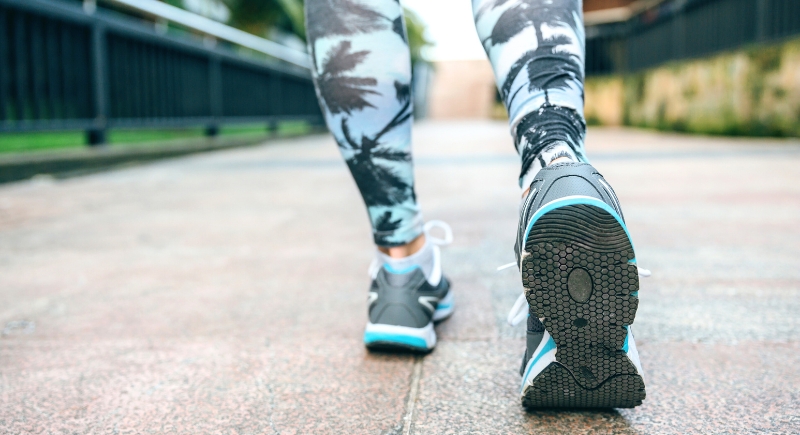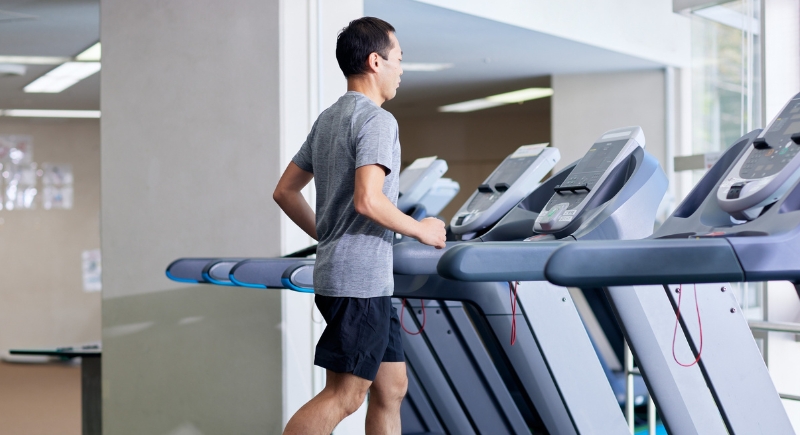Walking Backwards Might Be the Weirdest Health Trick That Works
Most people head into the gym ready to lift, run, or maybe squeeze in a set of lunges. What you don’t usually expect to see is someone walking backward with total focus, step after step, as if they’ve hit rewind on their workout. It looks odd at first glance—almost like a mistake—yet it’s catching on in surprising places.
What seems like a quirky stunt is actually turning into a smart fitness strategy. Trainers, therapists, and everyday gym-goers are discovering that moving in reverse challenges the body in ways forward walking can’t. And as more research highlights the benefits, this strange-looking practice is starting to earn a spot alongside more traditional exercises.
Muscles, Joints, and Calorie Burn

Image via iStockphoto/doble-d
Retro walking, as experts call it, flips the movement pattern your body has mastered. It’s a small change that has a surprising mix of physical and mental payoffs. Scientists at UCLA have found that walking backwards activates the prefrontal cortex, the brain’s control center for memory and decision-making. A Harvard-trained neuroscientist has recently taken it a step further by linking backward steps to sharper focus and faster recall.
When you’re walking backward, instead of your quads absorbing each step with a heel strike, the motion changes to a toe-to-heel roll. This activates the hamstrings, calves, and stabilizers in new ways. Therapists now recommend it for knee rehab because the altered load on the joints helps build quad strength while reducing strain.
It’s also easier on the hips and spine. Researchers tracking muscle activation patterns found that reverse walking engages muscles that support the lower back, while stretching tight hamstrings. People with chronic back pain have reported reduced discomfort after adding it into their routines.
And if you’re chasing calorie burn, the numbers are in your favor. Walking backwards increases energy use by close to 40 percent compared with forward walking at the same pace, according to published metabolic data. Treadmill studies confirm it, too, that at the same speed, you’ll burn more in less time, and climbing in reverse magnifies the effect.
Balance, Focus, and Brain Gains
Walking backward puts your balance to the test. Without the usual visual cues to guide you, your body has to rely more on proprioception—your built-in sense of where you are in space. That extra challenge sharpens coordination and stability, which is why athletes in sports like soccer and tennis often practice reverse drills. The payoff? Better focus, improved footwork, and a reduced risk of falls or ankle sprains.
For older adults, such training can strengthen stabilizing muscles and improve gait speed, which translates into better confidence when moving around day to day. The brain gets its own workout, too. By disrupting the routine rhythm of walking, retro steps require active concentration. Studies have linked this to faster reaction times and improved problem-solving.
Even short sessions, about ten to fifteen minutes, have been shown to boost cognitive activity. Neuroscientists suggest the novelty of the movement creates fresh neural connections, which could help preserve memory and executive function as we age.
How to Add It to Your Routine

Image via Canva/ Aflo Images
Start slow and stay safe. Reverse walking outdoors comes with the obvious risk of tripping, so treadmills or clear hallways are better for beginners. Experts recommend beginning with a slow pace, keeping the chest upright, and reaching back with the toes before rolling through to the heel. Using handrails at first is smart until the movement feels natural. Start with five-minute intervals and work toward twenty minutes once or twice a week.